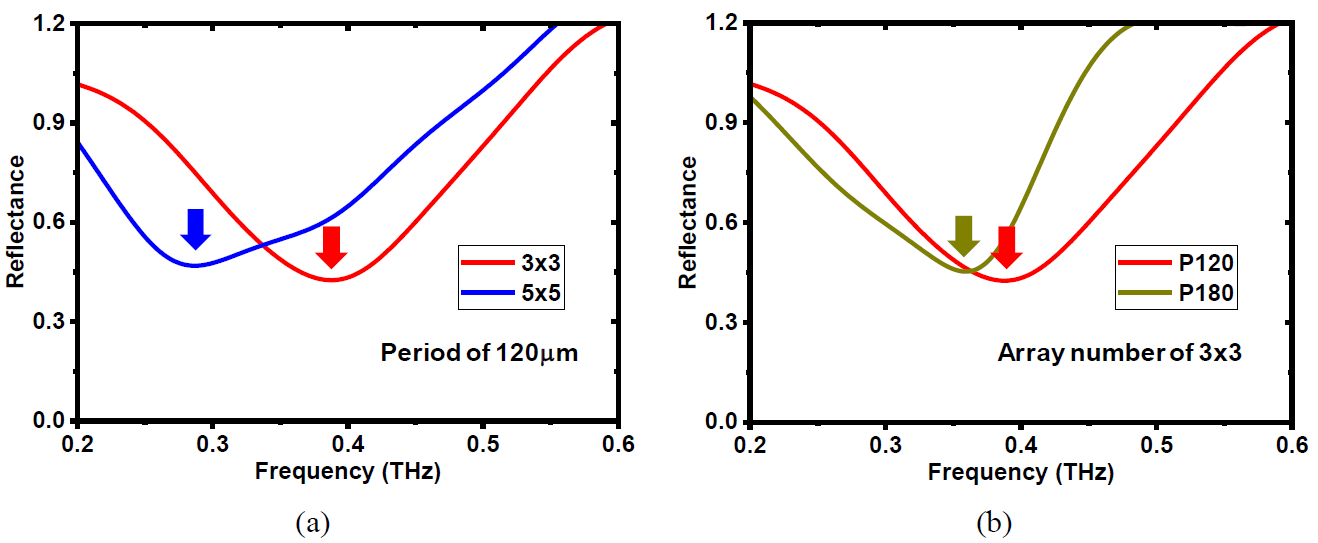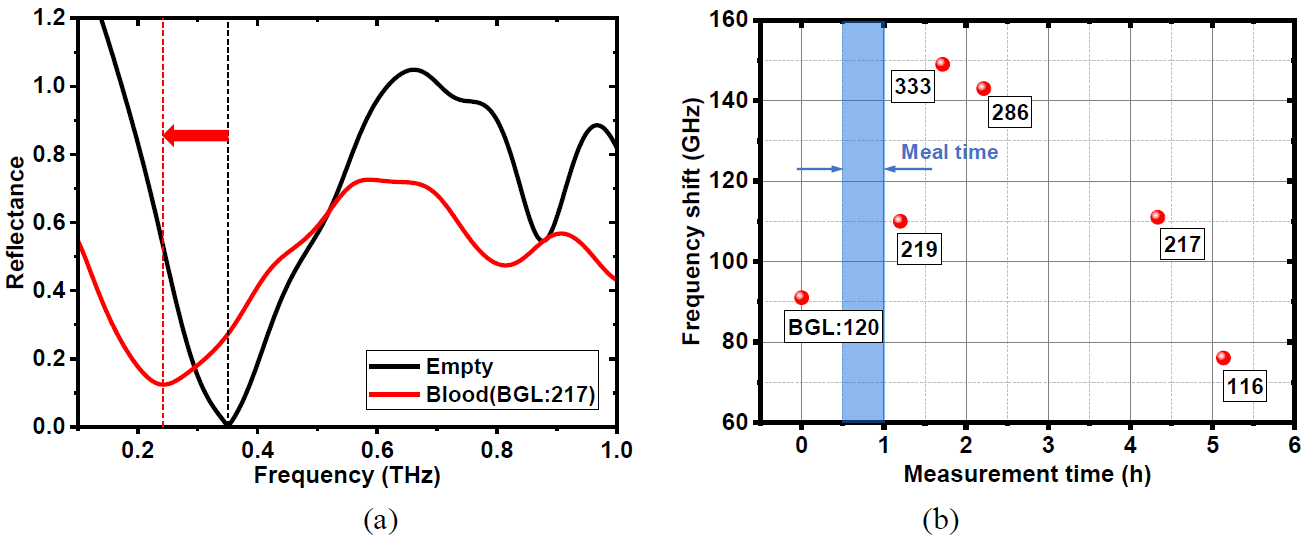| PREVIOUS PRESENTATION | BACK TO PROGRAM OVERVIEW | NEXT PRESENTATION |
Reflective properties of a THz meta-sensor and its bio-sensing application
Luwei Zheng1, Masayoshi Tonouchi1, and Kazunori Serita1
1Institute of Laser Engineering, Osaka University, Suita, 565-0871, Osaka, JAPAN
Terahertz (THz) technology has emerged as a significant sensing tool spanning diverse fields such as non-invasive/nondestructive detection, biology, and material science [1]. THz metamaterials are recognized as pivotal tools for manipulating THz waves due to their exceptional performance. Despite of numerous studies utilizing far-field THz wave excitation, reports on the near-field excitation and coupling of meta-atoms are scarce [2]. In biosensing applications utilizing THz waves, challenges arise from the diffraction limits and strong absorption effects in polar solvents, posing obstacles to achieving both trace and highly sensitive measurements. To overcome these hurdles, we have designed a series of meta-sensors employing a developed point THz source locally generated through optical rectification during femtosecond (fs) pulse laser irradiation on a nonlinear optical crystal, coupled with a few arrays of meta-atoms (fundamental units of metamaterials). This approach facilitates the understanding of the near-field coupling effect between meta-atoms and THz measurements of various solutions at the attomole and picoliter scale [3-5]. The present study explores the reflective properties of the meta-atoms and the potential application of this meta-sensor in blood analysis, specifically focusing on assessing its feasibility for measuring blood glucose levels (BGL) in minute quantities.

Figure 1: (a) Schematic of the experimental setup around the sample. (b) The geometrical parameters and configurations of the designed meta-atoms.
Figure 1(a) depicts the schematic drawing of the experimental setup around the sample[6]. A few arrays of meta-atom structures of double-gap split ring resonators (SRRs) were fabricated on the surface of a 500-μm-thick GaAs substrate. The near-field THz pulses are locally generated at the fs laser focusing irradiation spot with beam waist of ~20 μm (ϕTHz= ϕPump). Only the centre meta-atom is excited directly and the neighbouring meta-atoms are excited consequently through the electric-field coupling effect. Figure 1(b) demonstrates the geometrical parameters and configurations of the designed meta-atoms. The size of the meta-atom is 84μm × 84μm with linewidth of 10 μm and two gaps of 20 μm. The meta-atoms are arranged in arrays of 3×3, 5×5 with period of 120 μm and 180 μm.

Figure 2: (a) Number dependence and (b) Period dependence of the designed meta-atoms.
Figure 2(a) presents the analysis of the number dependence of the designed meta-atom structures with a fixed period of 100 μm. Remarkable LC resonances are clearly observed in both two cases as denoted by the red and bule arrows. As the array number increases from 3×3 to 5×5, a shift in resonance frequency towards the lower frequency region is noted, attributed to the coupling of an increasing number of meta-atoms. In figure 2(b), the period dependence is illustrated, which represents another significant parameter vitally affecting the coupling effect between meta-atoms. The array number is fixed at 3×3, and the period of meta-atoms increases from 120 μm to 180 μm. Analogously, resonance frequency shift to lower frequency is observed. Whether to alter the array number or the period of the meta-atoms, the coupling state between meta-atoms changes, resulting in resonance frequency shift in the spectra. In other word, we can modulate the resonance peak of the meta-atoms by adjusting its arraying number and period, which is highly favourable to the practical application of the meta-atom-based THz sensor chips.

Figure 3: Sensing performance evaluation. (a) The reflectance spectra of the meta-sensor with and without blood sample. (b) Plots of the resonance frequency shifts as a function of the blood glucose level (BGL), measured at each measurement.
To evaluate the sensing performance of the designed meta-sensor, human blood samples were used as our test samples. Figure 3(a) shows one of the measured THz reflectance spectra obtained when several hundred nanoliters of sample was deposited with a microsyringe onto the 5×5 arrays of meta-sensors with a period of 120 μm. The meta-sensor area is approximately 500μm × 500μm, which is smaller than the wavelength of the generated THz waves. A remarkable LC resonance was observed at approximately 0.35 THz at the empty sensor and was shifted to approximately 0.24 THz after deposition of the blood sample with BGL of 217mg/dL. Figure 3(b) shows the plots of the resonance frequency shifts as a function of the BGL measured at each measurement, which are measured by a commercial glucose meter. In this measurement, the fasting BGL was measured
in advance, and the postprandial BGL was measured five times at one-hour intervals. The resonance frequency shifted to a higher value with an increase in the BGL. These results suggest that our developed meta-sensor enables highly sensitive BGL testing using extremely small amounts. In the future, we will further improve sensitivity by optimizing the meta-atom design and discuss the possibility of non-invasive BGL testing.
This work is supported by JSPS KAKENHI JP20H00247, JP20K20536, JP21H01392, Fusion Oriented REsearch for disruptive Science and Technology JPMJFR2029, and China Scholarship Council (Grant No. 202206170007).
References
[1] M. Tonouchi, “Cutting-edge terahertz technology,” Nat. Photonics 1, 97 (2007).
[2] J. He et al., “Recent progress and applications of terahertz metamaterials,” Journal of Physics D: Applied Physics 55, 123002 (2021)
[3] K. Serita, E. Matsuda, K. Okada, H. Murakami, I. Kawayama, M. Tonouchi, “Invited article: terahertz microfluidic chips sensitivity-enhanced with a few arrays of meta-atoms,” APL Photonics 3, 051603 (2018)
[4] K. Serita, H. Murakami, I. Kawayama, M. Tonouchi, “A terahertz-microfluidic chip with a few arrays of asymmetric meta-atoms for the ultra-trace sensing of solutions,” Photonics 6, 12 (2019)
[5] K. Serita, S. Kobatake, M. Tonouchi, “I-design terahertz microfluidic chip for attomole-level sensing,” J. Phys. Photonics 4, 034005 (2022)
[6] L. Zheng, K. Hara, M. Tonouchi, K. Serita, “Evaluation of Reflective Properties of Meta-atoms using Point Terahertz Sources and Its Application in Microfluidics,” 48th International Conference on Infrared, Millimeter, and Terahertz Waves, Montreal, QC, Canada (2023)
